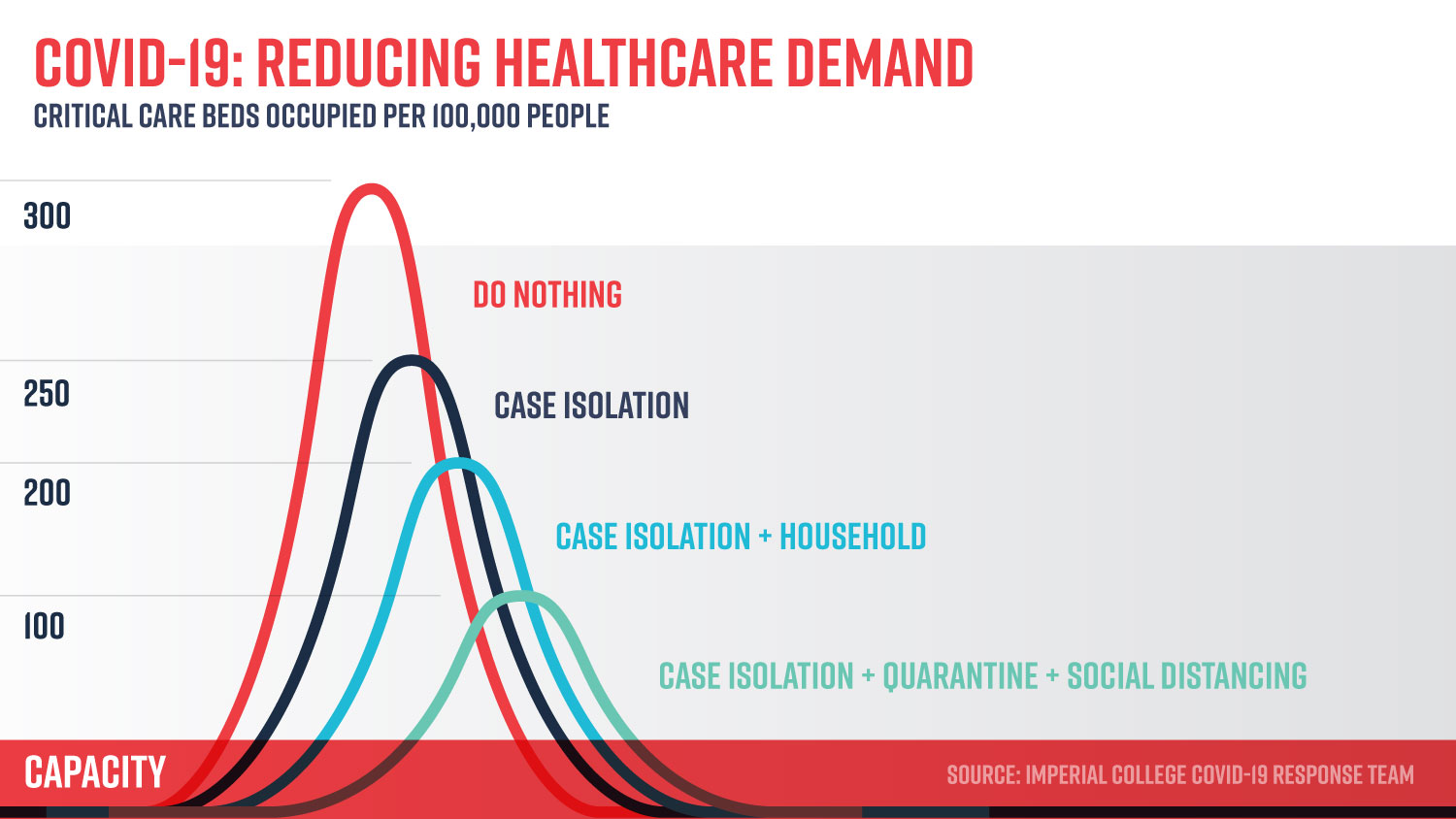We’ve discussed how robot-assisted care is one of the best ways to ensure that our healthy populations, including healthcare providers, don’t unnecessarily expose themselves to Coronavirus.
Social distancing attempts to ensure that healthcare providers aren’t overloaded. This is a mitigation approach that, according to a study by Imperial College, may reduce peak healthcare demand by two-thirds, and cut deaths in half by spreading cases out over time1.

The CMS telehealth expansion announcement yesterday is a move in the right direction to help this goal – and it’s likely that the ruling will eventually make private insurers follow suit. As of now, 32 states require insurance companies to reimburse claims at the same rate as in-person care via “parity laws”.
However, there is no set federal telemedicine policy for private insurers, and certain providers remain hesitant to implement it because not all remote communication technologies are HIPAA compliant.
In response to the unique challenges created by Coronavirus, the Office for Civil Rights (OCR) and Health and Human Services (HHS) announced this week that they will not impose HIPAA non-compliance penalties for good faith telehealth during the Coronavirus crisis.
Also, new rules from HHS and ONC will require more transparency from providers, leading consumers to have greater expectations of digital healthcare offerings.
Given this, there’s no better time to incorporate digitally progressive tactics to the strategic roadmap of speciality health clinics, hospitals, and other providers.
Vital digital tools for telehealth benefits
Omnichannel REMOTE Diagnosis
Many symptoms of Coronavirus, flus, and other illnesses, including runny nose, sore throat, cough, fever, and labored breathing, can be observed or described remotely. This creates interactions that, while satisfying social distancing strategies, still unwaveringly provides access to high-quality care.
The most commonly used technologies include:
- Video
The most common HIPAA-compliant technology providers (meaning they will enter into a BAA) include Skype for Business, Updox, VSee, Zoom for Healthcare, Doxy.me, and Google G Suite Hangouts meet. These tools allow patients and providers to connect securely over internet connected devices. -
Chatbots
Chatbots are conversational interfaces using pre-defined rules, scripts, and artificial intelligence that mimic a live support representative. Chatbots scale well to demand, because unlike humans, they can multi-task patient queues at a near-infinite scale. This makes them ideal for tier 1 support, because they can respond to user described symptoms with self-care advice, or refer out-of-scope inquiries to a human staffed live chat. - Live Chat
Unlike a chatbot, live chat is staffed by human support representatives. While they can’t multi-task at the same capacity as a chatbot, they are often able answer more specific questions, making them ideal for tier 2 and higher support. Interactions with live agents can also train chatbot responses. - Call Centers
Great patient experiences often start with the warmth of a human-conducted phone call. Call centers with integration into a healthcare CRM, advanced routing, and insightful reporting lead to informed conversations that result in satisfied patients. - Web forms
Administrative costs total a whopping 250 billion a year, and the inefficiency of paperwork is a big culprit. Electronic medical forms allow providers to be more efficient, produce more accessible documentation, and ultimately improve patient experiences.
Patient Generated Health Data (PGHD)
Typically, patient data is collected during physicals, routine checkups, or in the case of Coronavirus, when a patient arrives at a hospital or clinic with symptoms.
With the explosion of IoT technology such as wearables and dedicated medical devices, patient information can be available 24/7. When streamed to a cloud platform like Salesforce Health Cloud, This gives providers a great way to closely monitor conditions remotely.
Building a system that can reliably intake and store PGHD is complicated and requires a thoughtful strategy that involves multiple stakeholders, patient trust, and consideration of ONC certification rules.
But, the benefits are significant – not only does it lead to more insights and better care, but it makes social distancing during a pandemic like COVID-19 much more possible.
360-Degree view of the patient
Patient administration platforms are an amazing way for providers to give a comprehensive view of the entire healthcare ecosystem, including members, patients, insurance carriers, and providers…all in a single dashboard that enables compliant, collaborative, and personalized care.
Administration platforms should allow:
- Patient Activity Management
- Accelerated patient acquisition with omnichannel (SMS Text, Email, Phone) engagement capabilities
- Powerful patient engagement with scheduling, continuing education, and more
- Optimized patient service with data
- Actionable, AI-driven insights through data reporting and analysis
- Integration with existing ERP systems
CONTINUING EDUCATION, ENGAGEMENT, AND COMMUNICATION
The patient relationship often starts and ends at the annual physical. We want to break that cycle with health portals that engage patients in their healthcare to improve outcomes and quality of life.
The best aspects of a patient portal is they make it easy for patients and providers to remain connected. After all, patients often say that accessibility is key when it comes to their healthcare. A well-designed patient portal provides easy access to a variety of health information, like upcoming and past appointments, diagnostic results, and prescription history.
Additionally, this consistent point of access speeds answers to basic questions, makes payments quicker, and educational opportunities that lead to better healthcare outcomes.
What We’ve Learned So Far
If COVID-19 has taught us anything so far, it’s that we must respond to public health challenges with grit and community at heart. Penrod remains here to assist with digitalizing your healthcare ecosystem to improve care and lesson strain on your services.

